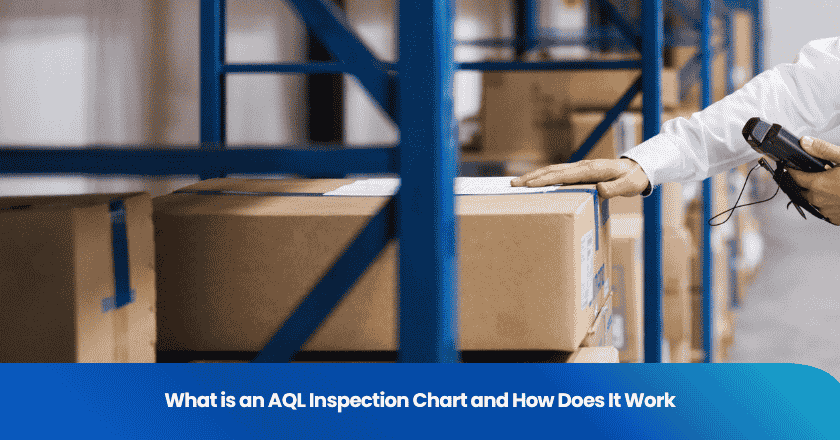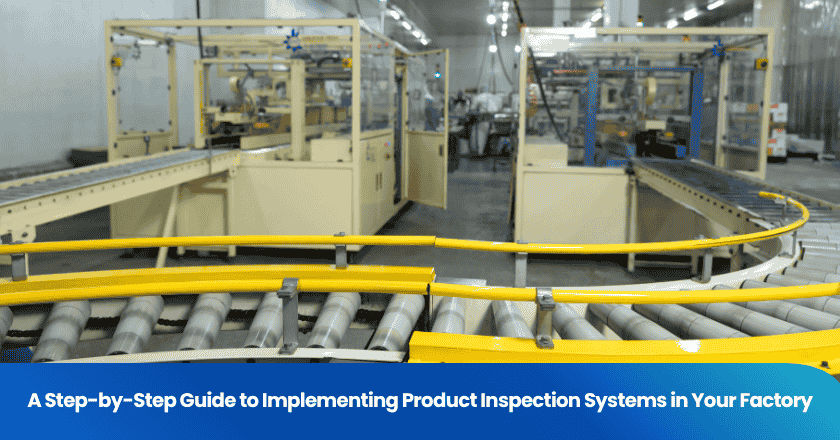
Quality control services help you ensure that your products or processes meet specific standards for quality. These services give you a structured way to check, monitor, and improve the quality of what you deliver. Many businesses invest in quality control services to protect their reputation and stand out in the market. You gain operational efficiency, build customer confidence, and support sustainable practices by using these services.
With quality control services, you can achieve consistent quality and reliable results in every aspect of your business.
Key Takeaways
l Quality control services help businesses ensure their products meet specific quality standards, leading to improved customer satisfaction.
l Implementing a structured quality control system can reduce waste, enhance operational efficiency, and support business growth.
l Regular inspections and testing are essential to catch defects early, ensuring that only high-quality products reach customers.
l Combining quality control with quality assurance creates a comprehensive system that prevents defects and maximizes efficiency.
l Investing in quality control services can protect your business's reputation and lead to long-term success in competitive markets.
Quality Control Services
Definition
Quality control services give you a systematic approach to maintaining and improving the quality of your products or services. You use these services to check that everything you produce meets established standards and benchmarks. Quality control involves a set of activities, including inspection, testing, and monitoring, that help you identify and correct issues before products reach your customers. You rely on these services to ensure that your business consistently delivers results that meet or exceed quality standards.
Quality control services operate across many industries, including manufacturing, healthcare, and finance. You can apply these services to physical products, digital solutions, or customer experiences. The global market for quality control services continues to grow, with projections reaching USD 15.5 billion by 2034. This growth reflects the increasing demand for reliable quality standards and benchmarks in a competitive marketplace.
Quality control services help you build trust with your customers by ensuring that every product or service meets strict quality standards.
Purpose
You use quality control services to make sure your products or services align with industry standards and customer expectations. The main role of quality control is to prevent defects, reduce waste, and maintain consistency in your operations. You achieve this by implementing quality standards and benchmarks at every stage of production or service delivery.
You benefit from quality control services in several ways:
l You reduce production costs by minimizing waste.
l You maintain consistency in finished products.
l You enhance customer satisfaction and loyalty.
l You prevent defective products from reaching the market.
l You improve production efficiency.
Quality control services help you inspect raw materials, monitor production processes, sample and test products, evaluate finished goods, and gather feedback for continuous improvement. You rely on regular inspections and robust traceability systems to ensure every stage meets quality standards.
The demand for quality control services has increased due to globalization and the rise of international standards. You see a shift toward holistic quality management, expanding from manufacturing to service sectors. Companies with strong quality cultures gain a competitive advantage and reduce costs, especially in industries like banking and healthcare.
Quality control services give you the tools and processes to meet quality standards and benchmarks, protect your reputation, and support sustainable growth.
Quality Control System
Components
A quality control system gives you a structured way to manage and improve the quality of your products or services. You rely on several key components to make your system effective. Each component plays a unique role in ensuring that your business meets customer expectations and industry standards.
A strong quality control system depends on these components working together. You can address challenges like poor product understanding or weak documentation by focusing on each part of your system.
Processes
You follow a series of steps in your quality control system to ensure consistent results. Each process helps you catch problems early and maintain high standards.
1. Define quality standards. You set clear, measurable criteria for your products.
2. Verify raw material quality. You inspect and test incoming materials to meet your specifications.
3. Sample and validate batches. You collect and test samples during production to check for consistency.
4. Perform in-process quality checks. You inspect products at different stages of manufacturing.
5. Report nonconformance and take corrective and preventive actions. You record defects and fix root causes.
6. Keep detailed documentation and records. You maintain accurate records of inspections and tests.
7. Inspect final products. You conduct thorough checks before releasing products to customers.
8. Drive continuous improvement. You analyze quality control data to find trends and improve your process.
You may face challenges in your quality control system, such as lack of employee training or poor document control. You can overcome these by standardizing your process and ensuring everyone understands their role. Modern technology, such as automation and AI, can also help you streamline your system, reduce errors, and improve collaboration.
A well-designed quality control system gives you confidence that your products meet the highest standards. You build trust with your customers and support your business growth by following these processes.
Quality Control Methods
Testing
You rely on testing as one of the most effective quality control methods. Testing helps you identify defects before products reach your customers. You use different types of testing to ensure your products meet safety, performance, and durability standards. Testing forms the backbone of your inspection and testing protocols.
You can use several testing approaches:
l Package testing checks if packaging protects products and appeals to buyers.
l Concept testing validates market demand before full-scale production.
l Claims testing ensures your product delivers on its promises.
72% of Americans make purchase decisions based on packaging, which highlights the importance of package testing. Around 46% of product development budgets are wasted on failed products, showing why concept testing is crucial. Claims testing also matters, as 35-40% of products are pulled from shelves shortly after launch. Product testing helps you avoid these costly mistakes and ensures your products align with customer needs.
Testing also reduces the risk of defects and increases customer satisfaction. You can use statistical process control, X-Bar charts, and the Taguchi method to monitor and improve quality. These quality control methods help you detect variations and maintain high standards.
Inspection
Inspection is another essential part of quality control. You use inspection to verify that your products meet specifications at every stage of production. A quality control inspector checks materials, processes, and finished goods to catch defects early. You can perform different types of inspections, each serving a unique purpose.
| Type of Inspection | Description |
| Pre-Production Inspection (PPI) | Conducted before manufacturing to ensure readiness of materials and compliance with standards. |
| During Production Inspection (DPI) | Performed during production to identify quality deviations early and ensure specifications are met. |
| Pre-Shipment Inspection (PSI) | Conducted before shipment to confirm products meet buyer specifications and quality standards. |
| Container Loading/Unloading Supervision (LS) | Final inspection to ensure safe loading/unloading and compliance with order details. |
| Piece-by-Piece Inspections | Detailed checks of individual products for quality assessment. |
A quality control inspector uses inspection and testing protocols to ensure consistency. Inspection during production helps you spot defects before they become widespread. You can also use internal audits, visual inspection, and 100% inspection methods to strengthen your quality control system. These quality control methods reduce waste, minimize defects, and support continuous improvement.
Regular inspections and testing protect your reputation and help you deliver reliable products to your customers.
Importance of Quality Control
Benefits
You gain significant advantages when you implement quality control across your operations. Constant attention to quality control is necessary for both local and international sourcing. You verify supplier capabilities to meet product requirements and identify issues early, which leads to swift corrective actions and sustainable value. You consistently meet predefined specifications and customer expectations, resulting in fewer defects and higher reliability.
Quality control creates a structured environment for process standardization and control. You reduce revision time and speed up the quality control process by centralizing inspections and detecting errors early. Comprehensive inspection reports improve communication and support continuous improvement. You see improved product quality, increased customer satisfaction, and enhanced operational efficiency. Consistency in output leads to free word-of-mouth advertising, while motivated employees contribute to productivity and improvement. You prevent defects and reduce labor hours needed for corrections, ensuring compliance with industry standards and regulatory requirements. You build a strong brand reputation by maintaining high standards and following regulations.
Regular feedback and monitoring help you maintain compliance and drive ongoing improvement. Quality audits provide valuable insights for continuous improvement frameworks.
Business Impact
Quality control has a direct impact on your business profitability and customer satisfaction. Quality assurance ensures a positive user experience, reducing customer frustration and building trust. Satisfied customers return, increasing lifetime value and consistent revenue. Happy customers become advocates, attracting new clients through positive reviews and feedback.
Your reputation, shaped by quality, is crucial for gaining trust and attracting new clients. Effective quality management enhances brand value and fosters long-term relationships. Prioritizing customer satisfaction is a sustainable way to increase profits. Loyal customers recommend your business, leading to organic revenue growth. Consistent delivery of high-quality products creates positive experiences and builds trust in your brand.
Statistical evidence shows that defect rates can drop significantly after implementing quality control. For example, an automotive plant reduced defect rates by 37% within six months using statistical process control. A report from Gartner indicated that 62% of consumers are likely to stop buying from companies perceived to compromise on quality.
Quality control also supports compliance with regulations and regulatory requirements. Automated analysis capabilities help you detect compliance gaps before they become problematic. Manual data processes lead to inefficiencies and increased risk of errors, which can result in data inaccuracies and missed deadlines. Technology tools have transformed compliance by automating and monitoring regulatory policies with greater accuracy.
You achieve regulatory compliance, meet industry standards, and avoid legal issues by integrating quality control, monitoring, and feedback into your business processes. Quality audits and continuous improvement frameworks help you adapt to changing regulations and maintain high standards.
Industries and Applications
Industries
You see quality control play a vital role in many industries that demand high standards and strict compliance. Companies in these sectors rely on quality control to meet regulatory requirements, maintain safety, and deliver reliable products. The industries that depend most on quality control include:
l Pharmaceuticals
l Aerospace
l Automotive
l Healthcare
l Electronics
l Food and Beverage
l Consumer Goods
You find that these industries require quality control for several reasons:
l Regulatory compliance
l Safety standards
l Need for high-quality products
Quality control ensures that you meet industry regulations and deliver products that customers trust. In emerging markets, you notice a strong trend toward adopting quality control services. The market is projected to grow at a CAGR of 6.1% from 2026 to 2033, reaching USD 45.1 billion. This growth comes from increased digitalization and investment in IT infrastructure, which drive the need for advanced quality solutions.
Tip: If you operate in any of these industries, investing in robust quality control can help you stay competitive and compliant.
Real-World Use
You can see the impact of quality control in real-world business practices. Leading companies implement quality control systems to improve efficiency, reduce defects, and enhance customer satisfaction.
You can learn from these examples by adopting similar quality control strategies in your own business. Quality control helps you achieve consistent results, meet customer expectations, and build a reputation for excellence. When you prioritize quality, you create a foundation for long-term growth and success.
Quality Control vs. Assurance
Differences
You often hear the terms quality control and assurance used together, but they serve distinct roles in your business. Quality control focuses on detecting defects in products before they reach your customers. Assurance works to prevent those defects by improving your processes from the start. You use quality control to check that every product meets industry standards. Assurance helps you build systems that stop problems before they happen.
Here is a table that highlights the main differences between quality control and assurance:
| Aspect | Quality Assurance (QA) | Quality Control (QC) |
|---|---|---|
| Focus | Prevention of defects | Detection of defects |
| Approach | Process-oriented | Product-oriented |
| Timing | Proactive | Reactive |
| Goal | Continuous improvement | Defect elimination |
| Methods | Process mapping, training, standard procedures | Inspections, testing, sampling |
| Documentation | Procedural documentation | Outcome-based documentation |
You rely on assurance to set up strong processes and training. Quality control gives you the tools to inspect, test, and sample products. Assurance is proactive, while quality control is reactive. Both play vital roles in your overall quality management system.
Tip: You can prevent costly mistakes by combining assurance and quality control in your operations.
Working Together
You achieve the best results when assurance and quality control work together. Assurance sets the foundation by establishing processes that meet quality standards. Quality control verifies that the outputs of these processes conform to your requirements. You use feedback from quality control to improve your assurance systems and prevent future defects.
Consider this step-by-step approach:
1. You implement assurance to design and document processes that meet quality standards.
2. You use quality control to inspect and test products, ensuring they meet specifications.
3. You analyze feedback from quality control to refine your assurance processes.
This partnership creates a comprehensive quality management system. You minimize defects, maximize efficiency, and build trust with your customers. When you integrate assurance and quality control, you see measurable outcomes such as consistent product performance, reduced defects, and improved customer satisfaction. You also achieve quality certifications, reduce waste, and meet industry-specific requirements.
International standards like ISO 9001 and ISO 13485 guide your assurance and quality control practices. These standards help you streamline global supply chains, simplify audits, and adapt to changing regulations. You protect your business from compliance risks and support sustainable growth.
You build a strong reputation and gain a competitive edge by combining assurance and quality control in your business.
You gain a clear advantage when you implement quality control services in your business. Quality control gives you a structured way to monitor and improve quality at every stage. You ensure compliance with standards, track performance metrics, and drive continuous improvement. Quality control leads to enhanced customer satisfaction, increased trust, and operational excellence.
- Quality control ensures compliance with client expectations.
- You monitor key metrics like Customer Satisfaction Score and First Call Resolution.
- Continuous improvement in quality control supports business growth.
You can explore further resources to strengthen your quality control approach:
- EPA Quality Management Tools for Organizations
- American Society for Quality (ASQ)
- The NELAC Institute (TNI)
- ISO/IEC 17025 Accreditation
- Guidance on Assessing Quality Systems (G-3)
- U.S. Food and Drug Administration Guide to Inspections of Quality Systems
Quality control helps you build a reputation for quality and reliability. You create lasting value for your customers and position your business for long-term success.
FAQ
What is the main goal of quality control?
You use quality control to ensure your products or services meet specific standards. This process helps you deliver consistent quality, reduce defects, and build trust with your customers.
How does quality control differ from quality assurance?
You focus on quality control to find and fix defects in finished products. Quality assurance helps you design processes that prevent defects before they happen. Both support your overall quality management.
Why should you invest in quality control services?
You benefit from quality control services by reducing waste, improving efficiency, and maintaining high standards. These services help you meet customer expectations and comply with industry regulations.
What types of businesses need quality control?
You need quality control if you produce goods, deliver services, or operate in regulated industries. Manufacturing, healthcare, food, and electronics companies all rely on quality control to ensure safety and compliance.
How often should you review your quality control processes?
You should review your quality control processes regularly. Frequent reviews help you identify issues early, adapt to changes, and maintain high levels of quality in your operations.
Grow your business with TradeAider Service
Click the button below to directly enter the TradeAider Service System. The simple steps from booking and payment to receiving reports are easy to operate.



